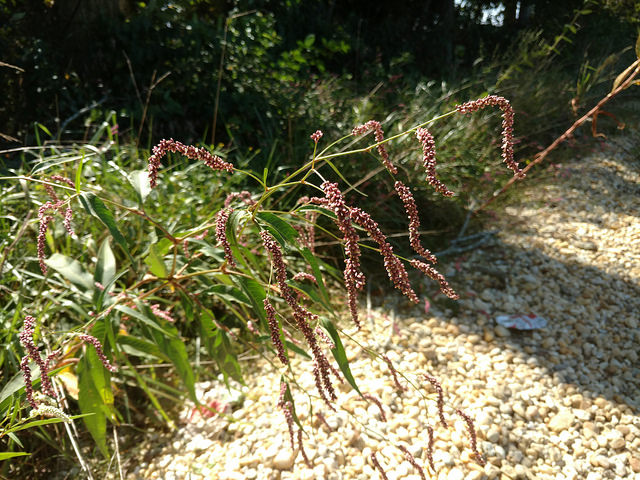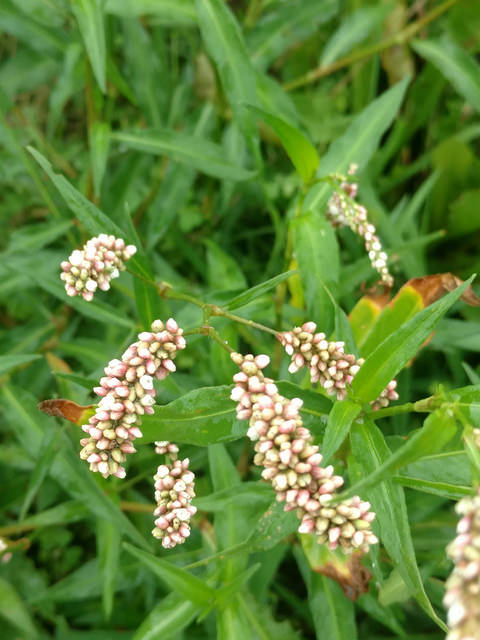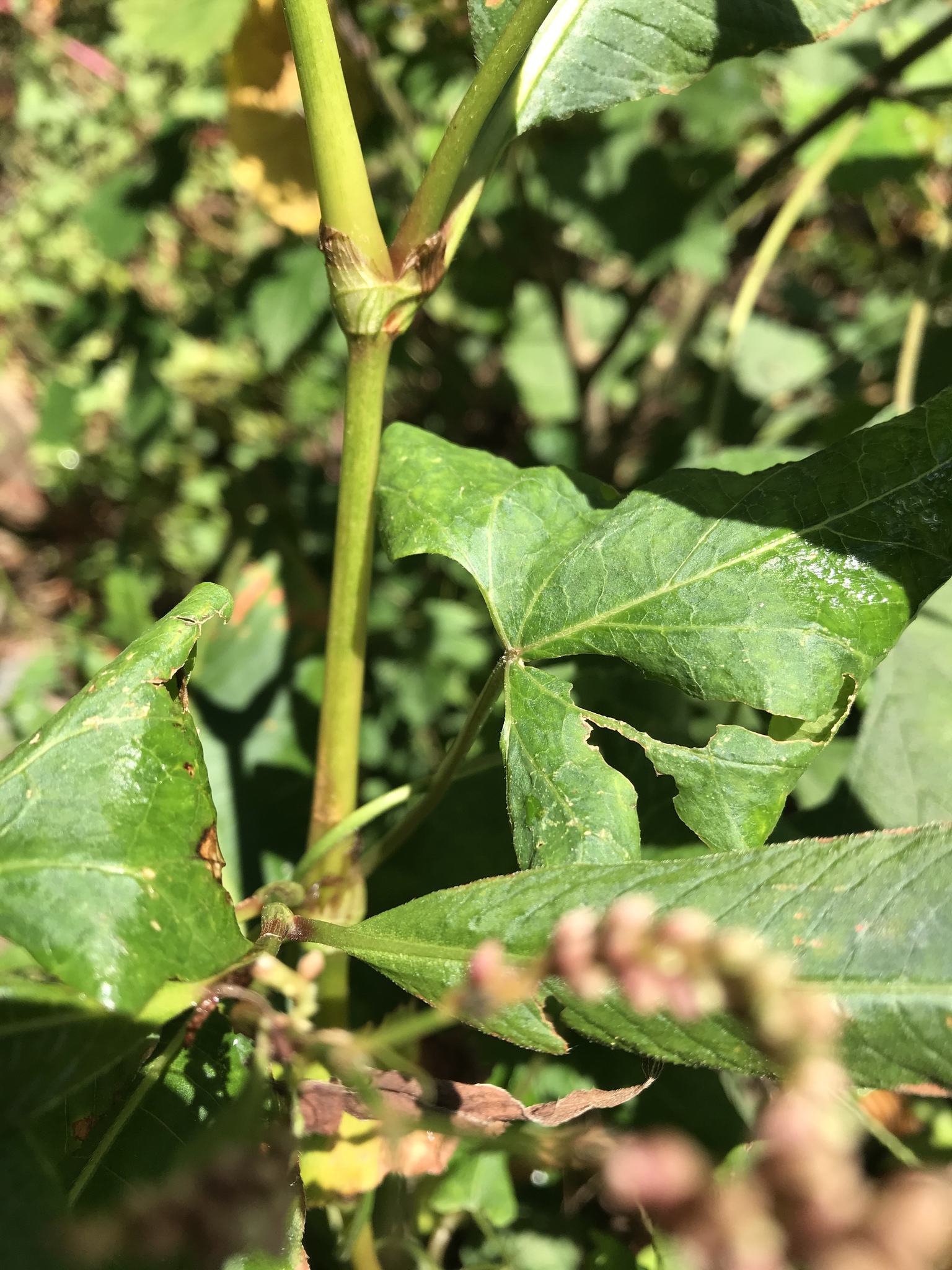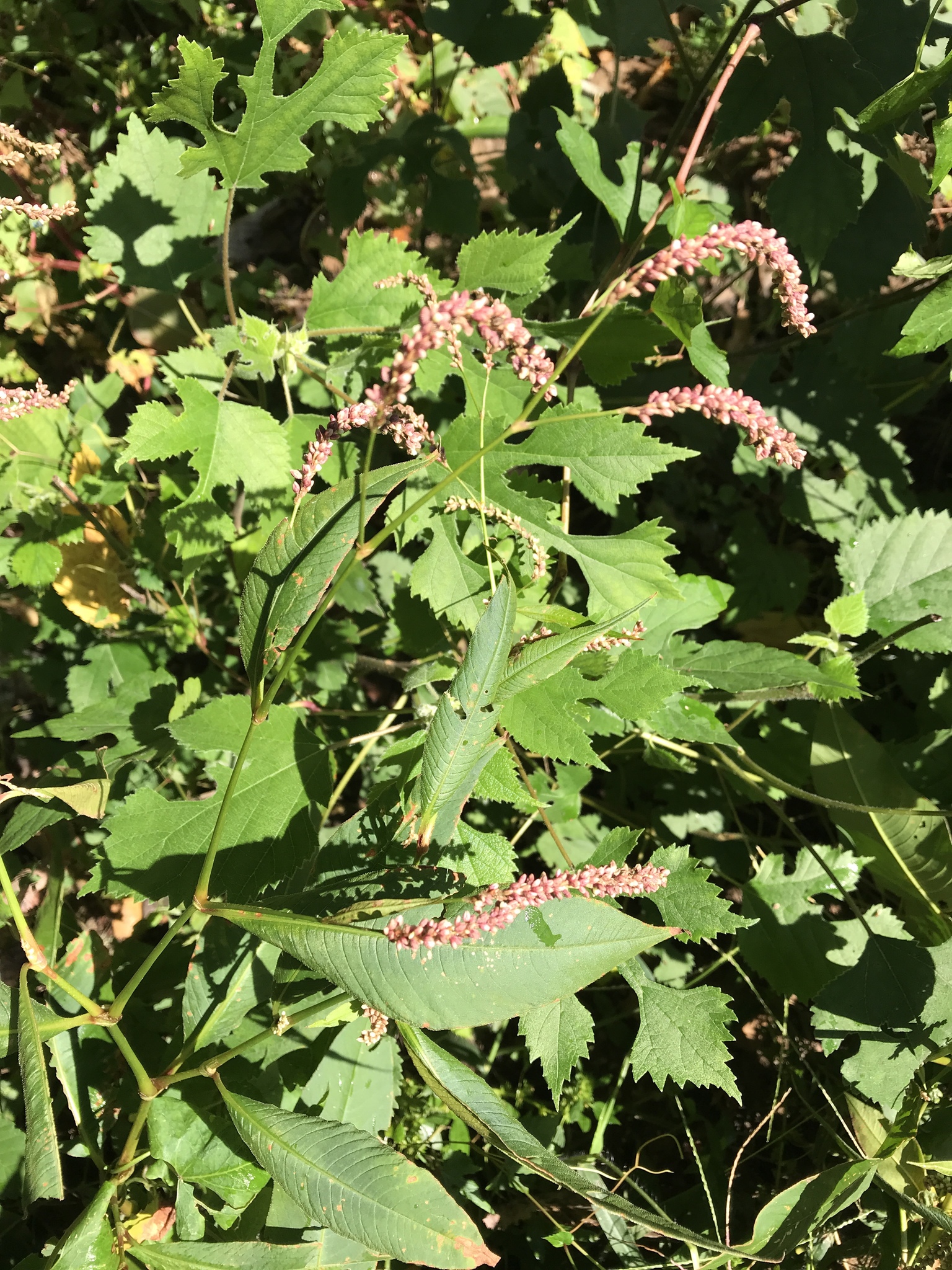Map Snapshot








15 Records
Status
Far-eastern Smartweed is native to Japan, the Russian Far East, China, and Korea. It is a relatively recent addition to the flora of North America with the first specimen being collected near Queens, NY in 1961. It is very similar to our native Persicaria species like the native Curlytop Knotweed and thus goes by unnoticed. According to Robert Naczi, the best way to differentiate between the two species is to look at the tepals, "If I know it's either lapathifolia or extremiorientalis, I find it easiest to examine the tepals. Those of lapathifolia have upside-down anchors. Each main vein splits into two arches that recurve forming a pattern like an inverted anchor. These veins are the single best diagnostic character of Periscaria lapathifolia. Persicaria extremiorientalis, on the other hand, lacks "anchor veins."
Seasonality Snapshot
Source: Wikipedia
| Persicaria extremiorientalis | |
|---|---|

| |
| Scientific classification | |
| Kingdom: | Plantae |
| Clade: | Tracheophytes |
| Clade: | Angiosperms |
| Clade: | Eudicots |
| Order: | Caryophyllales |
| Family: | Polygonaceae |
| Genus: | Persicaria |
| Species: | P. extremiorientalis
|
| Binomial name | |
| Persicaria extremiorientalis (Vorosch.) Tzvelev[1]
| |
Persicaria extremiorientalis, the east Asian smartweed, is a plant species in the buckwheat family, native to Japan, China, Korea, and far eastern Russia and introduced to the eastern United States where it is found from North Carolina to Massachusetts.[2][3]
References
[edit]- ^ "Plant Name Details Polygonaceae Persicaria extremiorientalis (Vorosch.) Tzvelev". The International Plant Names Index. Retrieved 2017-09-13.
- ^ Atha, Daniel E.; Nee, Michael H.; Naczi, Robert F. C. (2010). "Persicaria extremiorientalis (Polygonaceae) is established in the flora of the eastern United States of America". The Journal of the Torrey Botanical Society. 137 (4): 333–338. doi:10.3159/10-RA-033.1. S2CID 86509452.
- ^ Hamlin, Bryan T.; Kittredge, Walter T. (2013). "An update on the Middlesex Fells flora". Rhodora. 115 (962): 191–196. doi:10.3119/12-21. S2CID 86678741.





